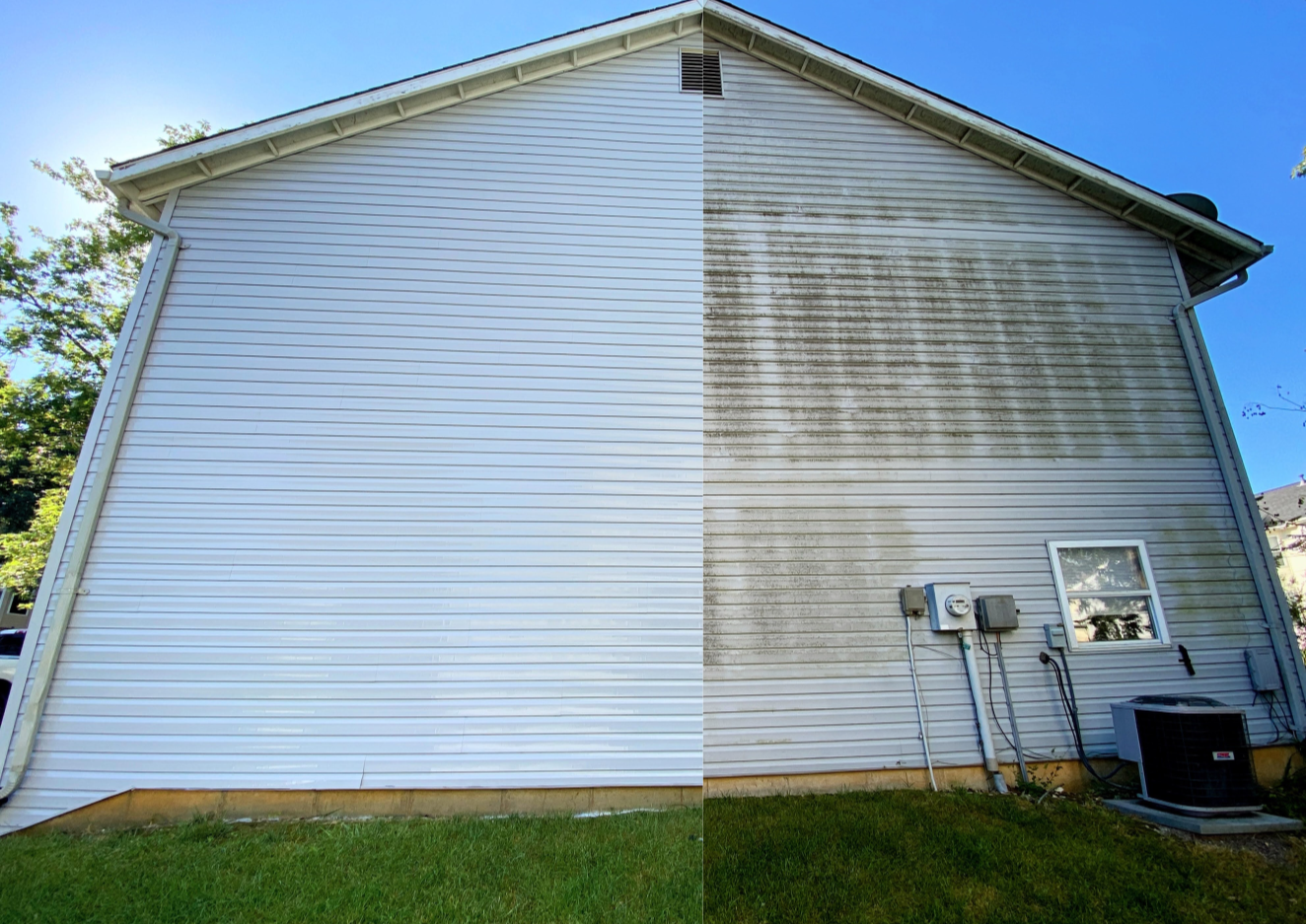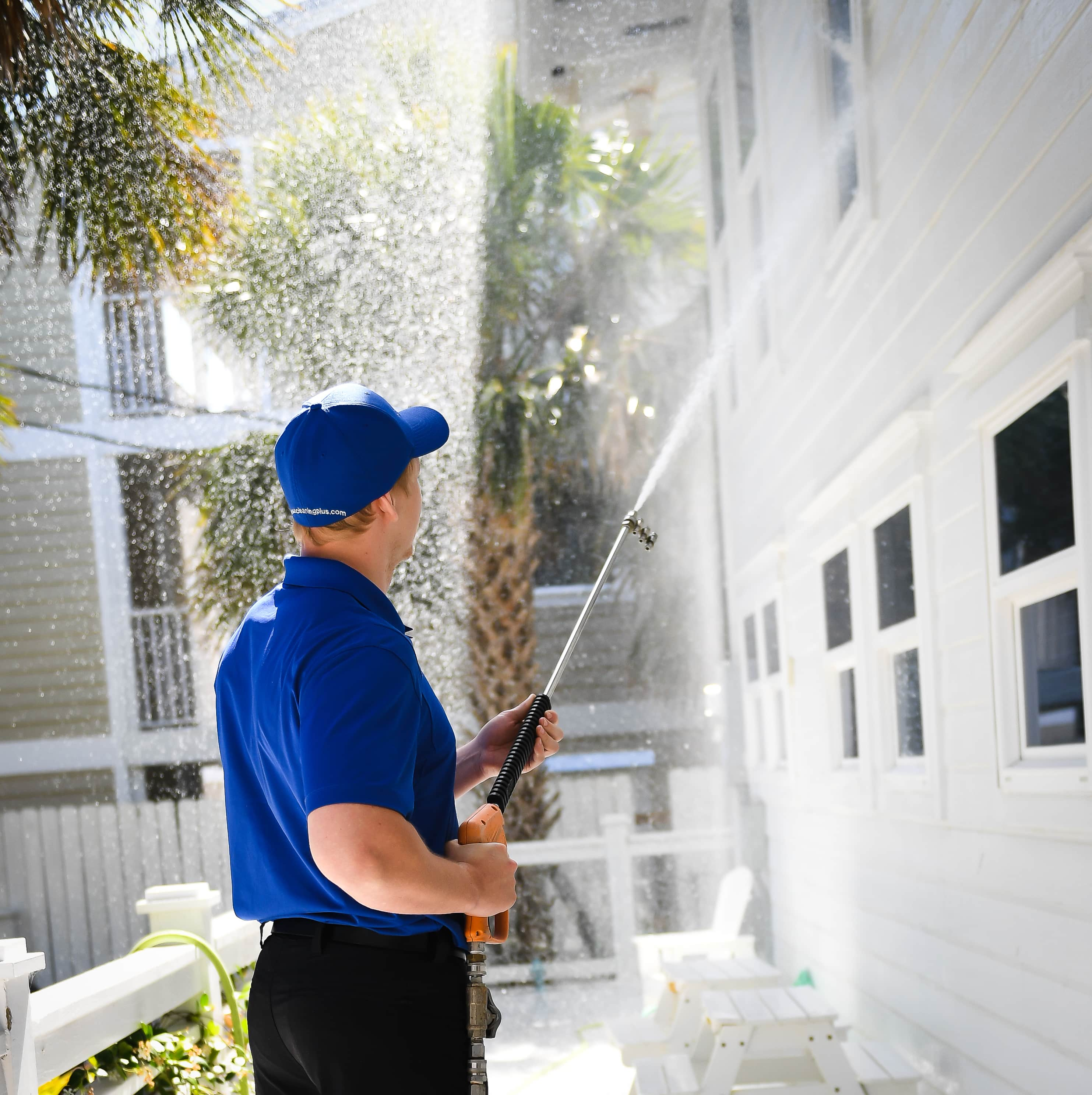Top-rated House Washing specialists near you.
Wiki Article
Comprehending the Secret Differences Between Pressure Washing and Home Washing
The difference in between pressure washing and house washing is important for property owners looking to keep their residential or commercial property's exterior. While pressure washing employs high-pressure water jets to eradicate persistent gunk from durable surfaces, house washing uses a gentler strategy that includes eco-friendly cleansing representatives to secure more fragile materials.Definition of Pressure Washing
Pressure washing, frequently referred to as power washing, includes the use of high-pressure water spray to remove dust, grime, mold, mold, and other impurities from different surface areas. This strategy is especially effective on tough surfaces such as concrete, brick, and rock, making it an ideal selection for cleaning up driveways, patios, and sidewalks. The procedure commonly uses specialized tools that creates water pressure varying from 1,500 to 3,000 psi or more, ensuring efficient cleaning also in difficult problems.Pressure washing is not limited to exterior surface areas; it can also be used for numerous applications, including vehicles, outside furniture, and devices. However, it is essential to note that the intensity of the water pressure can potentially harm delicate surfaces, such as timber or painted coatings, if not handled appropriately. Choosing the ideal pressure setup and nozzle type is critical for optimal results.
In addition to surface cleansing, pressure washing can additionally play a significant role in preserving the durability of frameworks by stopping the buildup of hazardous pollutants that can cause degeneration. On the whole, pressure washing works as an effective device for enhancing cleanliness and maintaining the honesty of different surfaces.
Definition of Home Washing
Home washing refers to the thorough cleaning of a home's outside surface areas, utilizing a combination of low-pressure water and specialized cleansing options. This technique is developed to eliminate dust, mold, mold, algae, and various other contaminants that build up over time, preserving the aesthetic allure and architectural stability of the property.
Unlike pressure washing, which employs high-pressure streams of water, residence washing highlights the use of lower pressure to protect against damages to delicate surface areas such as house siding, roof, and painted coatings. The cleaning solutions made use of are commonly naturally degradable and formulated to properly tackle certain concerns, guaranteeing a comprehensive clean without compromising the environment or the stability of the products being treated.
Residence washing is particularly beneficial for preserving the appearance of vinyl, timber, stucco, and brick exteriors. Routine residence washing not just enhances visual allure yet also adds to the longevity of a home's exterior surface areas by reducing the results of hazardous microbes and toxic wastes. Home owners are motivated to arrange residence washing periodically to ensure their property stays in optimum problem, thus securing their financial investment.
Key Techniques Utilized
In the world of outside cleaning, numerous strategies are employed to achieve optimal outcomes during house washing. The main technique includes soft washing, which makes use of low-pressure water incorporated with specialized cleaning solutions. This method successfully eliminates dirt, algae, and mildew without harmful delicate surfaces such as wood or repainted siding.One more secret method is the usage of a surface cleaner attachment, which is click here for more info especially efficient for flat surfaces like outdoor patios and driveways. This device supplies consistent cleaning by utilizing revolving jets that cover a bigger location, making sure regular results.
Chemical application is also critical in residence washing. Cleansers such as sodium hypochlorite or biodegradable cleaning agents are frequently utilized to break down challenging discolorations and organic development. House Washing. Correct dilution and application approaches are necessary to lessen any type of possible damages to plants or landscaping
Ideal Surface Areas for every
Pressure washing, which uses high-pressure water jets, is finest fit for hard, long lasting surfaces that can hold up against extreme pressure. These surface you could try these out areas commonly collect difficult spots, such as oil, oil, and mold, which require the powerful cleansing activity supplied by pressure washing.
On the other hand, house washing generally employs a softer method, using low-pressure water incorporated with specialized cleaning agents. This approach is ideal for even more fragile surface areas, consisting of repainted timber, vinyl home siding, and stucco. Home washing properly gets rid of dust, pollen, and mold without taking the chance of damage to the exterior finish. It is specifically valuable for locations where delicate products are included, as it reduces the potential for chipping or removing paint.
Benefits and Downsides

On the other hand, residence washing uses a gentler strategy, typically employing a mix of low-pressure water and cleaning options. This technique is much safer for painted surfaces, siding, and roofing systems, aiding to protect their stability. The main downside of residence washing is that it might not remove deeply ingrained dust or persistent spots as properly as pressure washing, which can need even more time and several applications.

Conclusion
In recap, pressure washing and home washing offer distinctive functions in exterior cleansing. Pressure washing employs high-pressure water streams, making it appropriate for sturdy surface areas and effective versus difficult discolorations. Conversely, residence washing makes use of a low-pressure strategy with eco-friendly solutions, ensuring the security of fragile products. Comprehending these distinctions facilitates notified choices relating to the proper cleansing approach based upon surface area type and problem, eventually advertising reliable upkeep and longevity of outside surfaces.Report this wiki page